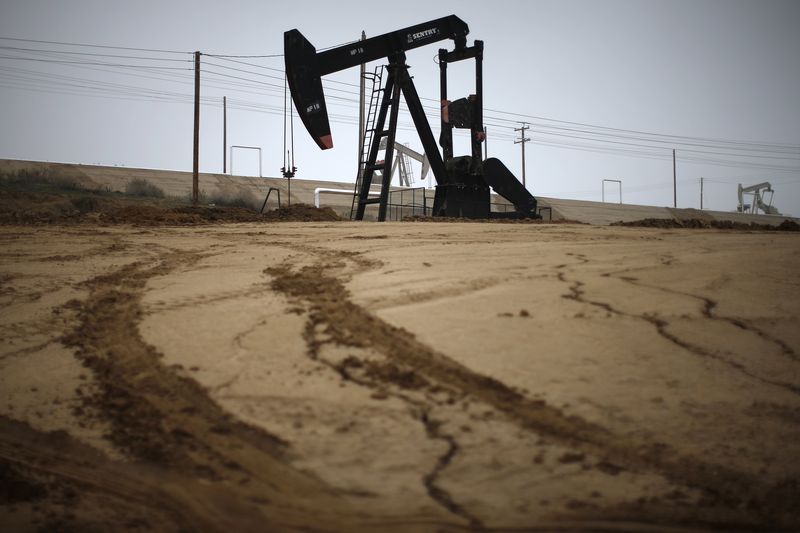By Jessica Resnick-Ault
NEW YORK (Reuters) - As rapid growth in U.S. shale production grabs headlines and threatens to upend attempts by OPEC to balance oil markets, a more unsung sector of the U.S. industry is also hitting new output highs - the offshore Gulf of Mexico.
While attention and investment is focused on shale, the Gulf is the among the most prolific oil source in the United States, producing more than Alaska, the West Coast and Rocky Mountains combined. The region churned out a record 1.76 million barrels per day of crude in January, trailing only Texas onshore production, which includes the growing Permian Basin.
“The business can compete with tight onshore oil any day,” said Richard Morrison, regional president for the Gulf of Mexico for BP (LON:BP) Plc speaking at the annual Offshore Technology Conference in Houston, where nearly 70,000 people from 120 countries are attending.
The Gulf region is expected to add another 190,000 bpd before the end of the year, according to the U.S. Energy Information Administration. Growth should continue, according to consultancy RBN Energy, which expects production to rise by 300,000 bpd in 2018 from current levels.
To get similar 2017 growth in Texas's Permian Basin, for example, drillers would need to double the current rig count from the current 342, according to a Reuters analysis of U.S. EIA data. Even if that were possible, incrementally added rigs might not be as productive as those currently drilling, as prime locations have already been claimed.
Unlike shale, where price immediately governs production, Gulf production has proved relatively resistant to fluctuations in prices, fueled by projects approved before oil lost 80 percent of its value in less than two years.
For production to ramp up further in the Gulf, however, producers will have to reckon with the idea that the more active shale region - where time horizons are shorter - might keep crude oil prices overall lower for longer, with little chance to break out of the $45 to $55 per barrel range.
Low oil prices had prompted some companies, including ConocoPhillips (NYSE:COP), to pull back from the Gulf, as offshore rig owners are still smarting from the downturn.
Because of the long lag involved in assessing deepwater prospects and building drilling rigs, some of today's projects are the result of decisions made five or more years ago. Hess Corp's Stampede offshore project, for example, is expected to produce 15,000 bpd of crude beginning in the middle of next year.
Overall, rising offshore production offset the decline in shale. Through the end of 2016, "the increase in U.S. crude oil production has been driven entirely by Gulf of Mexico offshore," Bank of America (NYSE:BAC) analysts wrote in a note to clients.
While low oil prices from 2014 to 2017 reduced the number of new investment decisions taking during that time, some low-cost projects are still being approved, which may lessen the blow of low prices.
Gulf output is also being driven by so-called tie-backs, which are subsea lines that connect to existing projects, according to RBN Energy. These less-expensive underwater lines offer companies a chance to connect additional wells at known fields to active platforms.
A wave of big projects have come online, including Shenzi, Lucius, Heidelberg and Delta House, all approved before the downturn, said Leslie Cook, principal analyst in Upstream Supply Chain at Wood Mackenzie.
Going into year three of the downturn, tie-backs are continuing but exploration has dropped quite a bit, she said. That may affect growth going forward, even after the Trump Administration signed an executive order looking to review leases, including in the Gulf.
"What we see is a gap coming up,” she said.
Around the Houston trade-show floor, companies are more optimistic than they were in 2016. Services providers hawked technology they say will make offshore exploration and production more competitive.
Ultra-light cranes, platforms that can be brought on-line faster and virtual reality "twins" of facilities designed to help engineers spot problems before taking costly flights out to remote platforms were among the highlights.
While the conference is global, many of these developments will be rolled out in the Gulf: BP said its Mad Dog Two production facility will have a virtual twin when it comes online.
At KBR's booth at the OTC, Executive Vice President Graham Hill said they were marketing a new platform to customers, including those in the Gulf, but he was getting some pushback their assertion that the platform can produce oil economically at $40 a barrel.
“Nobody has yet decided to go down that road. We think that's because of false hope, and this is the new norm,” he said. “The new norm is $55 a barrel oil for three to four years, because shale producers will open up the tap when the price goes up.”
